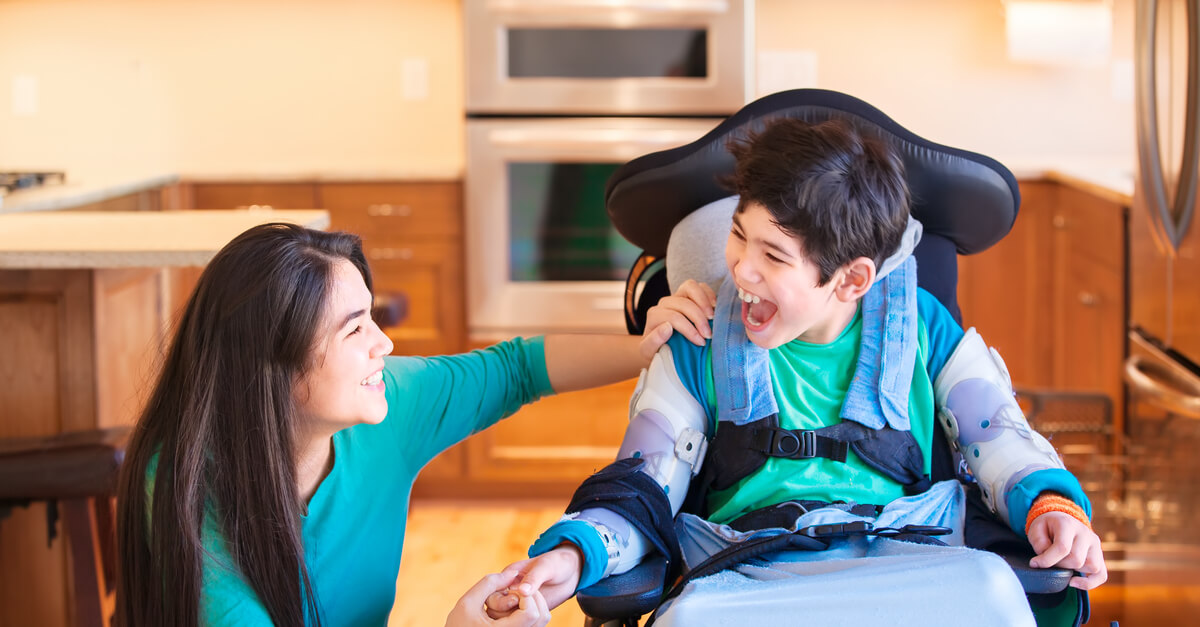Cerebral Palsy and Schizophrenia Explained

A recent study found that cerebral palsy patients might be at a higher risk of schizophrenia and other mental health conditions. Thankfully, both cerebral palsy and schizophrenia can be managed with proper treatment and care. Learn more about these conditions.
Are Cerebral Palsy and Schizophrenia Linked?
A 2019 study published in the Annals of Internal Medicine found that people with cerebral palsy are more likely to develop schizophrenia than those without.
Men with cerebral palsy were four times as likely to develop schizophrenia and women with cerebral palsy were five times as likely, according to the study.
Cerebral palsy is a lifelong disorder caused by brain damage early in life (usually before birth).
It can lead to a variety of physical and mental health problems such as difficulty walking and learning disorders.
Schizophrenia is a very serious mental health condition that causes hallucinations, delusions, and disorderly thoughts. Like cerebral palsy, it affects people for the rest of their lives.
Because of the increased risk, parents of children with cerebral palsy should learn more about schizophrenia. This can help parents make better choices about their child’s health care.
Can Cerebral Palsy Cause Schizophrenia?
It is not known if cerebral palsy can cause schizophrenia. At this time, researchers believe that a combination of bad genes and brain chemistry may lead to schizophrenia.
Recent research also suggests that complications during pregnancy may increase the risk of schizophrenia. Sadly, many pregnancy complications can cause cerebral palsy as well.
Pregnancy complications linked to cerebral palsy include:
- Fetal stroke
- Genetic mutations
- Infections that pass from mother to fetus
- Medical malpractice
- Traumatic head injuries
If more research links schizophrenia to pregnancy complications, then both conditions may share a common cause.
How Are Cerebral Palsy and Schizophrenia Different?
Onset
Cerebral palsy and schizophrenia typically develop at different times in a person’s life.
- A cerebral palsy diagnosis typically takes place in early childhood when symptoms become noticeable. It can be hard to tell if a newborn has cerebral palsy or not.
- Schizophrenia is usually diagnosed when a patient is entering adulthood. It’s extremely rare for a child to develop schizophrenia, according to the Mayo Clinic.
Men who develop schizophrenia often do so in their 20s. Women usually develop schizophrenia in their 20s or 30s.
Varying Symptoms
Common symptoms of cerebral palsy include:
- Lack of balance
- Difficulty walking or standing
- Delays in speech development or communication
- Stiff muscles with normal reflexes (rigidity) or with exaggerated reflexes (spasticity)
The symptoms of cerebral palsy can vary greatly depending on the part of the brain that was damaged.
Symptoms of schizophrenia can also vary, but often include:
- Delusions (false beliefs not based in reality)
- Hallucinations
- Disorganized thinking and speech
Doctors also classify symptoms of schizophrenia into two categories: positive symptoms (symptoms that add) and negative (symptoms that take away).
Positive symptoms include hallucinations and delusions, while negative symptoms include disorganized thinking and speech.
How Are Cerebral Palsy and Schizophrenia Alike?
Shared Symptoms
Even though the two conditions are quite different, they do share some symptoms.
Symptoms of both cerebral palsy and schizophrenia include:
- Robotic speech
- Difficulty socializing
- Disorganized or abnormal motor behavior
These shared symptoms can make it hard to know if someone with cerebral palsy has schizophrenia later in life.
Parents and caregivers can closely monitor any changes to their child’s behavior as they age to look for possible signs of schizophrenia.
Patients Need Support
Cerebral palsy and schizophrenia have no cure and can be difficult to manage. Patients with these conditions often need the support of family and loved ones to maintain a good quality of life.
For example, parents can make sure their child’s needs are met by seeking out proper treatments and helping their child as they seek medical care.
How to Manage Cerebral Palsy and Schizophrenia
Seeking medical care as soon as possible can help manage both cerebral palsy and schizophrenia more effectively and improve a patient’s quality of life.
The sooner a diagnosis is made, the sooner treatments can begin to help ease symptoms.
Treatments for cerebral palsy may include:
- Medications
- Muscle and nerve injections
- Oral muscle relaxants
- Therapies
- Physical therapy (exercises to strengthen affected muscles)
- Speech and language therapy (improve a patient’s ability to speak)
- Recreational therapy (improve motor skills and emotional well-being)
- Surgery to improve motor skills and ease stiff muscles
Treatments for schizophrenia may include:
- Antipsychotic medications
- Therapy sessions or social skills training
- Hospitalization to ensure proper nutrition and care (if needed)
- Electroconvulsive therapy (if medications don’t work)
Learn more about treating cerebral palsy and other conditions with our FREE Cerebral Palsy Guide or by calling (855) 220-1101. Our team is standing by to help you.
